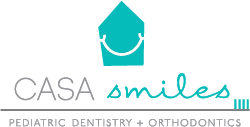Can you say……”RE-TAIN-ER”
Happy “Tooth-Day”!
Special Agent Farah Flossit here:)
Great day to all of my friends & followers! So, for today’s discussion,….BRACE YOURSELF (hint-hint)!!!! I wanted to show some extra love to our Ortho side here at Casa Smiles http://www.casasmiles.com/orthodontics/ with our fabulous orthodontist Dr. Iwanowski http://www.casasmiles.com/about-us/dr-iwanowski-dmd/.
If you have invested your time & money in wearing braces, you should know how great it feels to have achieved a beautiful smile & higher self-esteem. So, let’s “Get It Straight”! It is soooo important to follow through with your recommended treatment & wear your retainers once you remove your braces. Don’t you want to keep your amazing smile & continue to feel confident when you are taking selfies, giving a presentation at work or school, or just chatting with friends? The TLC you gave your mouth while you had your braces on should not come to an end when you get them off. At that point, you can gladly say “RE-TAIN-ER”!! If you are saying this, it’s because you have actually graduated and are now qualified to wear RETAINERS; the most important factor in “RETAINING” your winning smile & keeping your teeth straight. I want to help give you the knowledge you need to understand retainers, what they are, why they are imperative, what types exist, & how to care for them.
WHAT ARE RETANERS?
Retainers are custom-made devices, usually made of wires or clear plastic, that hold teeth in position after surgery or any method of realigning teeth. They are most often used before or after braces to keep teeth in position while assisting the adjustment of the surrounding gums to changes in the bone. Retainers should be worn immediately after your braces are removed. Initially for about 6 months they should be worn all the time, except when eating food & then you can gradually decrease your retainer time to only at night.
WHY ARE THEY IMPERATIVE?
If you don’t wear your retainers, the teeth which you straightened with your braces will try to go back to their original position & you will go back to having misaligned teeth:( If you end up in this situation, (which you won’t because you are going to take Farah Flossit’s advise, right?) braces will have to be re-applied & you will have to repeat your treatment. If you fail to wear your retainer for a short time, it may not fit properly anymore. If this happens, you need to let your orthodontist know right away. In order to solve this type of problem, you will probably need a new retainer in order stay on the “brace-less” path.
She’s cute, but with today’s report, you won’t have to worry about this awkward moment. LOL
WHAT TYPES OF RETAINERS ARE THERE?
HAWLEY RETAINER:
The HAWLEY retainer is the best-known type of retainer, which includes a metal wire that typically surrounds the 6 anterior teeth & keeps them in place. It was named after its inventor, Dr. Charles Hawley. The Hawley bow, or labial wire, incorporates 2 omega loops for adjustment. It is anchored in an acrylic arch that sits in the palate (roof of the mouth). The advantage of this type of retainer is that the metal wires can be adjusted to finish treatment & continue minor movement of the anterior teeth as needed.
Mike from Monsters University wears his Hawley:)
Vacuum-formed ESSIX Retainer (VFR):
Another common type is the vacuum formed retainer (VFR). This is a polypylene or polyvinylchloride (PVC) material, typically .020″ or .030″ thick. Essix (invented by Dr. John Sheridan) and Zendura are the brand names commonly associated with this retainer. This clear or transparent retainer fits over the entire arch of teeth or only from canine to canine (clip-on retainer) and is produced from a mold. It is similar in appearance to Invisalign trays (which I will discuss in great detail in a future post). The retainer is virtually invisible & clear when worn. When eating, the retainer is removed to allow natural consumption and to avoid crushing of the VFR.
Most removable retainers are supplied with a retainer case for protection. During the first few days of retainer use, many people experience extra saliva in their mouth. This is natural & is due to the presence of a new object inside the mouth & consequent stimulation of the salivary glands. Below you will find some of the cool cases you get here at Casa Smiles http://www.casasmiles.com/orthodontics/ when you are ready for your RE-TAIN-ER.
FIXED RETAINERS:
A fixed retainer typically consists of a passive wire bonded to the tongue-side of the incisors. Unlike the previously mentioned retainer types, fixed retainers cannot be removed by the patient. Some doctors prescribe fixed retainers regularly, especially where active orthodontic treatments have affected great changes in the bite & there is a high risk for reversal of these changes. While the device is usually required until a year after wisdom teeth have been extracted it is often kept in place for life. Fixed retainers may lead to tartar build-up or gingivitis due to the difficulty of flossing while wearing retainers. As with braces, patients often must use floss threaders to pass dental floss through the small space between the retainer & the teeth.
FIXED RETAINER
HOW TO CARE FOR YOUR & RETAINERS:
Below you will find a helpful link to tips on how to clean your retainers:)
https://www.pinterest.com/pin/179440366377544259/
I will leave you all with an informative video directly from the AAO https://www.aaoinfo.org/ to watch & enjoy! https://vimeo.com/43949875
Thank you for tuning in & I hope you have a great “Tooth-Day”!
In the meantime, you can follow us on Facebook https://www.facebook.com/casasmilespediatricdentistryandorthodontics?pnref=lhc. Instagram http://instagram.com/casasmiles/, Twitter https://twitter.com/casa_smiles, Yelp http://www.yelp.com/biz/casa-smiles-pediatric-dentistry-and-orthodontics-coral-gables & Pinterest https://www.pinterest.com/casasmiles/ to hear all about our daily news! You can always call or email us with any questions, concerns, to make an appointment, or for a complimentary Ortho Consultation http://www.casasmiles.com/contact-us/.
Your Friend,
Farah Flossit (Special Agent Flossit)










